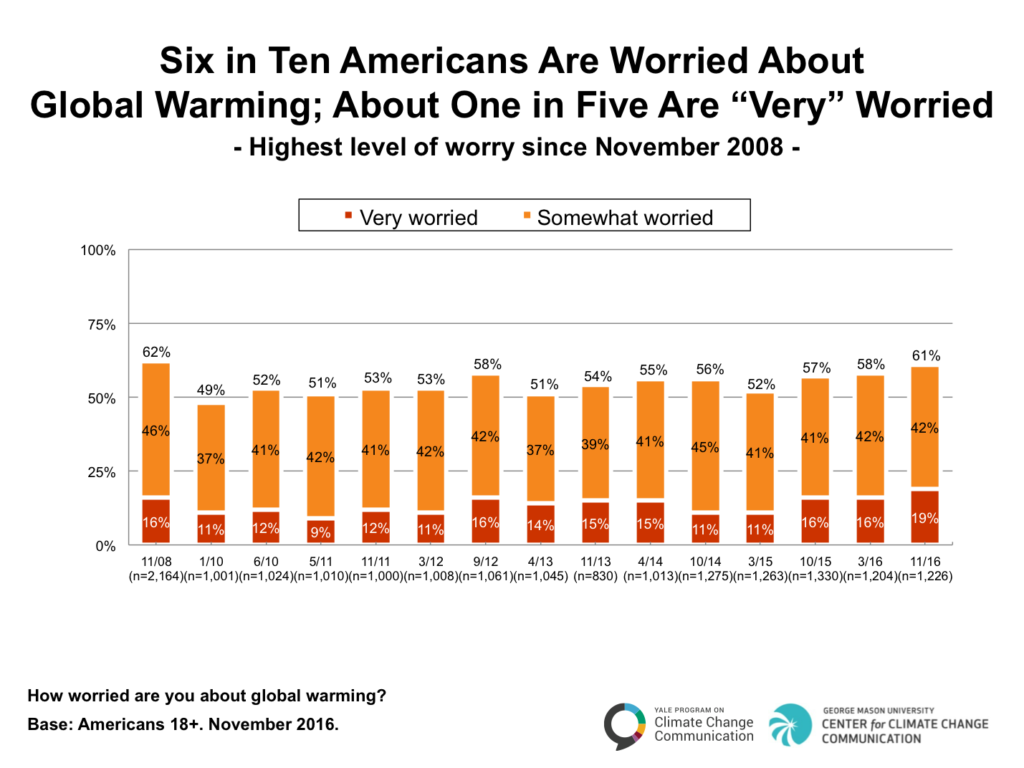Report · Jan 18, 2017
Climate Change in the American Mind: November 2016
By Anthony Leiserowitz, Edward Maibach, Connie Roser-Renouf, Seth Rosenthal and Matthew Cutler
Filed under: Beliefs & Attitudes
2. Global Warming Emotions
2.1. Six in ten Americans are worried about global warming, about one in five are “very” worried.
Six in ten Americans (61%) say they are at least “somewhat worried” about global warming. Further, a larger percentage of Americans are now “very worried” about global warming (19%) than at any time since our surveys began in 2008. Worry about global warming has increased 9 percentage points since spring 2015, an increase that is driven mostly by people who now say they are “very worried” (+8 points since spring 2015).
2.2. Two in three Americans feel “interested” in global warming. Half feel “hopeful” about it.
When asked how strongly they feel several emotions when they think about global warming, two in three Americans (66%) say they feel very or moderately “interested” in it, followed by about half who say they feel “hopeful” (48%).
Large minorities also feel very or moderately “helpless” (46%), “disgusted” (42%), and/or “afraid” (42%) when they think about global warming.
Emotional reactions to global warming may be felt for different reasons, and signify different meanings depending on an individual’s beliefs about global warming. For instance, someone who thinks global warming is happening may feel “disgusted” about it for different reasons than someone who thinks global warming is not happening. For that reason, we looked separately at people’s emotions about global warming depending on whether they think it is happening, don’t know whether or not it’s happening, or think it is not happening.
Eight in ten (81%) Americans who think global warming is happening say they are very or moderately “interested” in it. Half or more feel negative emotions, including “helpless” (56%), “afraid” (54%), and/or “disgusted” (52%). However, a majority who think global warming is happening also feel “hopeful” (54%).
More than one in three Americans who don’t know if global warming is happening still feel “hopeful” (44%), “interested” (36%), and “helpless” (35%). Some Americans who think global warming is not happening are also “hopeful” (24%), “interested” (19%), and “disgusted” (19%).



